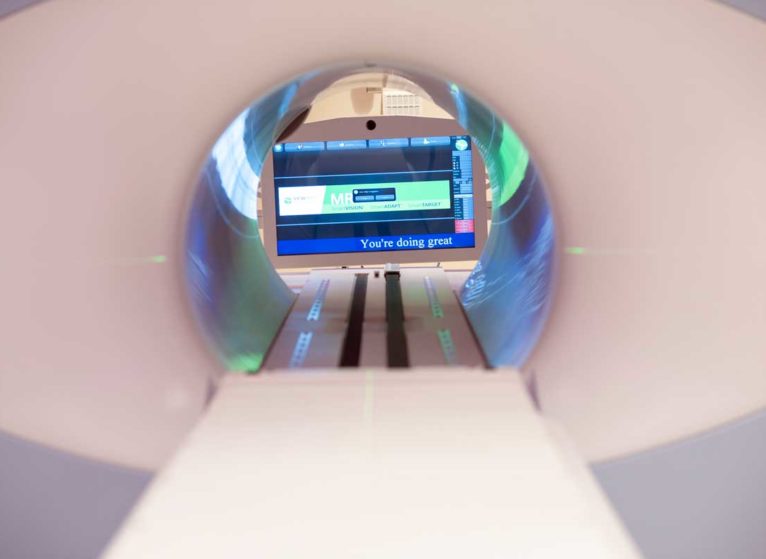If you’ve seen Top Gun or the new Maverick movie, then you’re probably familiar with the term “missile lock.” It’s that sweet spot when your target is in your sights and perfectly aligned for a successful hit. For our cancer experts, their target, of course, is cancer. And now, they have a new tool that will make it easier than ever to hit their mark: the MR-linac.
The MRI-guided radiation therapy system, MRIdian®, combines the superior visualization of magnetic resonance imaging (MRI) with a linear accelerator. This device delivers high-dose radiation with a new intensity of precision. “The combination of these two technologies really allows us to do amazing things that we couldn't do before,” says radiation oncologist Einsley Janowski, MD, PhD. “It’s really a huge step forward.”
Only around 25 of these machines have been installed nationwide, and UVA Cancer Center is one of only two centers in Virginia to add this to their cancer-treating arsenal.
Why the MR-Linac Is a Gamechanger for Pancreatic Cancer Care
Radiation therapy has been used for over a century to treat cancer, and the technology has continued to evolve to boost cure rates and limit side effects. The MR-linac is designed to overcome some of the limits of conventional radiation therapy.
It creates extremely detailed images, leading to less damage to normal tissue and thus, fewer side effects.
The machine also can aim at tumors in organs that move with breathing and digestion, like the pancreas, prostate, and rectum.
Why UVA Health for Pancreatic Cancer? ”Our outcomes for treatment of pancreatic cancer are among the best nationally. Our High Risk Clinic continues to be a huge success in screening and early detection for patients at increased risk of pancreatic cancer. And we are expanding our research to include cutting-edge methods in cancer genetics, cancer biology, and in computation data analytics,” says Todd W. Bauer, M.D.
“In the past, radiation therapy was like aiming our gun at the target, then closing our eyes and pulling the trigger. Now, we're going to be able to keep our eyes open as we pull the trigger and keep them open throughout the radiation treatment,” says Jeff Siebers, PhD.
Patients will also keep their eyes open — to help the procedure by adjusting their breathing. And the machine also allows for real-time treatment adjustments. Both of these elements promise to improve the accuracy and effectiveness of the therapy.
“It’s going to be another tool in our arsenal,” Janowski says. ”It will allow us to be aggressive in treating some of those cancers like pancreatic cancer that are notoriously difficult to treat.”


